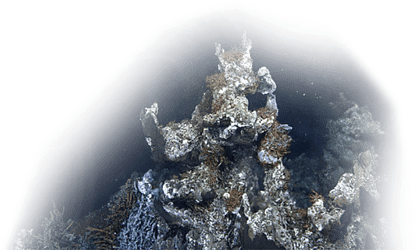In June 2016, Ocean Networks Canada (ONC) successfully deployed and connected the first of several earthquake early warning sensors on the Cascadia subduction zone. It will be part of a network of seismic sensors that ONC will install underwater and on land as part of an earthquake early warning system funded by Emergency Management British Columbia (EMBC).
The first EEWS sensor being deployed on the Cascadia subduction zone.
In February 2016, the Government of British Columbia announced an investment of $5 million to develop an earthquake early warning system that will provide British Columbians with up to 90 seconds of warning in advance of the arrival of ground shaking after the 'Big One' occurs. The Cascadia subduction zone is an active seismic region that is expected to produce a major earthquake in the future. An early warning alert will save lives and protect infrastructure.
With the support of the University of Alaska’s research vessel Sikuliaq and Woods Hole Oceanographic Institute’s remotely operated vehicle Jason, ONC deployed the EEWS sensor on the Cascadia subduction zone during its recent Expedition 2016: Wiring the Abyss. This EEWS sensor—a Titan accelerometer—is encased in a glass sphere to withstand the pressure in water depths of 850 m at Barkley Canyon.
Following deployment, the sensor was successfully connected to ONC’s observatory infrastructure and data management system, Oceans 2.0. ONC scientists have already been able to analyze data from recent minor earthquakes.
“We are among the first in the world to install these types of sensors in the ocean for earthquake early warning,” says Kate Moran, president of Ocean Networks Canada.
A green caisson embedded into the ocean floor is filled with glass beads to provide a stable environment for the EEWS sensor to detect seismic activity at the Cascadia fault.
A crab watches as the EEWS sensor is carefully inserted into the caisson.
After deployment, the EEWS is covered with glass beads and then connected to ONC's observatory infrastructure and powerful data management system, Oceans 2.0.
RELATED STORIES
- Ocean Networks Canada to coordinate earthquake early warning for BC – media release February 2016
- Making progress on earthquake early warning – web story January 2016
- First BC Offshore Earthquake Early Warning Sensor Up and Running - CBC News story 20 July 2016
- Earthquake warning sensors installed off B.C. coast - Global BC news story, 27 July 2016
